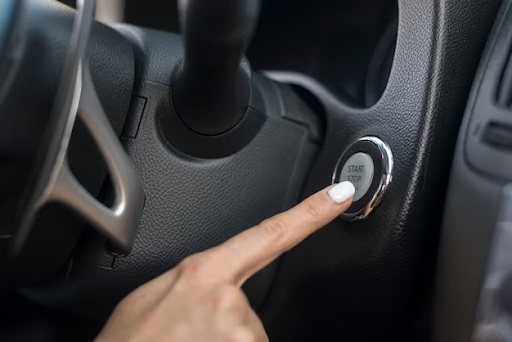Changing cars involves transitioning from one vehicle to another due to factors such as aging, mechanical problems, or a change in lifestyle or financial situation. It requires comprehensive research, financial planning, and consideration of personal needs.
Identifying Your Needs and Preferences
Assessing your current vehicle
Assessing your current vehicle is essential to ensure it’s in optimal condition. It involves checking the mechanical systems, tires, bodywork, and interior comforts. Regular assessments can help detect issues early, enhancing safety and prolonging the vehicle’s life. When your current vehicle does not serve your needs, a car switch is what you need.
Determining your specific requirements
Determining your specific requirements is crucial for successful planning. This process involves identifying your needs, setting clear goals, and outlining the specific resources necessary to achieve these goals. It provides a roadmap to desired outcomes.
Considering your budget
Considering your budget is fundamental when planning any activity. It helps to manage your resources efficiently, avoid overspending and encourages responsible financial behavior. Furthermore, it offers insights into your spending patterns aiding in overall financial health.

Conducting a Thorough Research
Comparing different vehicle models
When comparing different vehicle models, many factors come into consideration, such as the car’s fuel efficiency, price, engine performance, safety features, and overall design aesthetics. Thorough research and a test drive are key in making an informed decision.
Exploring online and offline resources
Exploring online and offline resources is crucial for comprehensive research. Online resources offer vast, easily-accessible information while offline resources, like books and journals, provide in-depth, reliable content. Combining both can enrich knowledge and understanding.
Understanding the pros and cons of different vehicles
Understanding the pros and cons of various vehicles helps in making an informed decision. Fuel efficiency, cost, maintenance, and space are critical factors. However, balancing personal needs and preferences with these factors ensures a perfect choice.
Inspecting the Car Carefully
Checking the vehicle history
Checking the vehicle history is a crucial step when buying a used car. It offers valuable insights into the vehicle’s past, including accidents, ownership changes, recall information, and maintenance records, ensuring a safe and worthwhile purchase.
Examining the car’s exterior and interior
To evaluate a car’s condition, examining both its exterior and interior is crucial. The exterior can reveal signs of physical damage, repainting, and rust. Meanwhile, the interior’s state can show signs of wear and tear, malfunctions, or inadequate maintenance.
Taking the car for a test drive
Taking a car for a test drive is an essential part of the purchasing process. It allows you to assess the vehicle’s handling, comfort, and responsiveness, ensuring it suits your specific needs and preferences.
Negotiating the Car Price
Understanding the car’s market value
Understanding your car’s market value is crucial when planning to sell or trade in your vehicle. It involves considering factors such as its age, mileage, condition, and the demand in the current market. Accurate evaluation ensures a fair transaction.
Making a reasonable offer
Making a reasonable offer involves thoughtful evaluation of the item’s value, consideration of the seller’s asking price and wisely determining a counteroffer. It’s important to negotiate respectfully, ensuring mutual satisfaction during the transaction process.
Handling negotiations professionally
Handling negotiations professionally involves employing effective communication, active listening, and compromise. It’s crucial to remain calm, respectful, and patient, diligently seeking win-win solutions that promote harmonious business relationships and successful outcomes.
Trading In or Selling Your Old Car
Evaluating your car’s worth
Evaluating your car’s worth is important when planning to sell or trade it. Factors like mileage, condition, market demand, and model year largely determine its value. Utilizing online appraisal tools can help you get an accurate estimate.
Choosing between trading in and selling privately
Choosing between trading in and selling privately depends on individual priorities. Trading in is quicker and more convenient, while selling privately potentially offers a higher return but requires more effort and risk. Always consider the pros and cons of both options.
Preparing your car for sale or trade-in
Before selling or trading in your car, ensure it’s in its best condition to maximize value. Clean both the interior and exterior thoroughly. Conduct a routine check-up, fixing any minor issues, and ensure all documentation is in order.
Finalizing the Purchase
Understanding the financing options
Understanding financing options involves analyzing the various types of loans, credits, and investment opportunities available. It’s vital in making informed decisions on investments, starting a business or buying assets. Knowledge empowers you to select favorable terms and avoid debt pitfalls.
Completing the paperwork
Completing the paperwork is a crucial part in any administrative process. It involves filling out necessary forms with relevant information and signing them. Properly done paperwork helps in maintaining order, tracking progress, and facilitating smooth operations.
Transferring the vehicle title and registration
Transferring a vehicle title and registration involves legally changing the ownership of a vehicle. It’s typically required during buying or selling a car. This process varies by state and may include fees, form submission, and inspection requirements.
After-Sale Considerations
Adapting to your new car
Adapting to your new car can be a thrilling experience. It involves familiarizing yourself with its unique controls, understanding the car’s dimensions for parking, and learning the technology. You may also need to adjust your driving style to its power and handling.
Scheduling regular maintenance
Scheduling regular maintenance is crucial for any machinery or equipment. This not only extends its durability but also optimizes performance. Proper maintenance prevents unforeseen breakdowns, saves funds on major repairs, and ensures safety.
Handling insurance coverage
Handling insurance coverage involves understanding your policy’s terms and benefits, regularly reviewing your coverage, filing claims promptly, and maintaining open communication with your insurance provider to ensure optimal financial protection.



